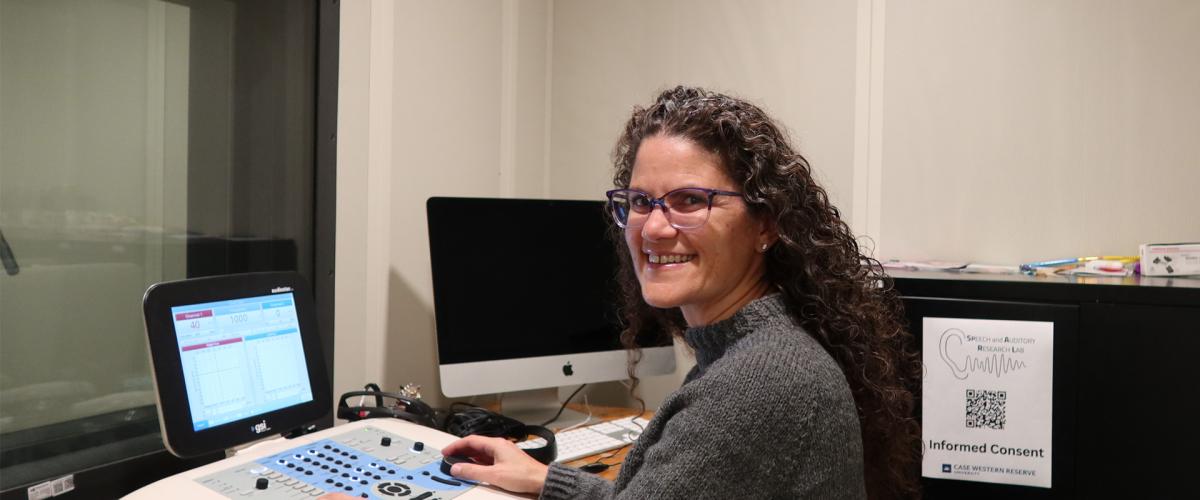Gap vs. American Eagle: CWRU expert weighs in on what fashion ads tell us about beauty ideals in 2025
Gap’s latest campaign starring the TikTok-born group Katseye and American Eagle’s denim ads with actress Sydney Sweeney may seem like they’re sending two very different messages—the latter incorporating a controversial message playing on the word “genes,” while the former leans into a TikTok-inspired vibe and a surface-level celebration of diversity.
But according to Einav Rabinovitch-Fox, a historian of women, gender and fashion at Case Western Reserve University, both ultimately rely on the same longstanding formulas about beauty and who gets to be seen as desirable.
Rabinovitch-Fox, whose research at the College of Arts and Sciences explores the intersections of fashion, consumer culture and feminism, says these ads aren’t about empowerment so much as they are reflections of broader cultural values—and the limits of how brands portray women today.
Read on for her perspective on what these campaigns reveal about gender, identity and the fashion industry in 2025.
Q: What stands out to you about how each brand is using women to sell clothes?
Rabinovitch-Fox: What stands out is not that they're using women to sell clothes (this is a tale as old as time), but which women they chose to portray and how they use them. While both companies are trying to court Gen Z, Gap is doing it by emphasizing diversity and has a TikTok vibe, while American Eagle (AE) appeals to more traditional ideas of femininity and beauty which are mostly white.
Q: Do you see one campaign leaning more toward empowerment, while the other leans on traditional beauty ideals?
Rabinovitch-Fox: I'm not sure if either of these campaigns lean toward empowerment. Each of them is selling sex and jeans. What we see in the Gap campaign is a bit more diversity of bodies in terms of race, but they all abide to the same Western ideals of beauty which is [to be] thin, young and sexy. We don't see diversity of bodies in terms of size or age in the Gap ad. “Milkshake” is a song that talks about how to look sexy for men, so there isn't an appeal to girls’ power or anything that can be inspiring. With Sydney Sweeney, the message is more pronounced, and the appeal to whiteness is more blunt, but in terms of sexiness, I don't see much difference. She, too, appeals to men.
Q: What do these contrasting ads tell us about where fashion and feminism intersect in 2025?
Rabinovitch-Fox: I'm not sure that feminism sells today the way it used to maybe 10 years ago. We are in a moment when more conservative ideas about gender and gender roles are in power. We see the rise of the tradwife trend. There is a lot of backlash against feminism (and women in general) in our culture. Women's rights are taken away. So companies don't necessarily feel comfortable with selling a feminist message to consumers, or at least they don't think this kind of message would appeal to consumers.
We need to remember that the purpose of ads is to sell a product. Ads both shape culture but they are mainly a reflection of culture and values. Ads want to appeal to us, not to make us angry. So when we see ads for denim that emphasize that we can look good and sexy with their product, the message is that jeans will help us to get men/sex. I'm not so sure that is a feminist message though. In both ads these women are being viewed as objects, they are in an empty room without context, so there isn't a message here about success or professionalism, only about looking good (for a male gaze) in denim.
Q: In your view, which ad feels more in line with historical patterns of how fashion has portrayed women?
Rabinovitch-Fox: Sex has been used to sell products almost from the beginning of advertising as a profession. Advertising people understood very quickly that sex sells. And unfortunately, I'm not sure how much this message has changed. Fashion appeals to beauty, and historically celebrated narrow ideals of beauty—white, thin, young.
Jeans also have a long history in using sex and sex appeal to sell a product that historically was workwear, associated with working class and enslaved people, and is unisex and even masculine in nature. And yet, ads for jeans—maybe the most memorable is Brooke Shields for CK Jeans—have used sex to turn this everyday fashion into something more glamorous. So in this regard both Gap and AE are continuing this tradition. Both sell sex, it is only the type of woman who they imagine can be sexy is different.
Q: How should consumers think critically about the messages behind both of these campaigns?
Rabinovitch-Fox: I think in general consumers need to be critical of everything that tries to sell us something. Companies are not in the business of losing money, so we need to ask ourselves what message we hear and why we find it appealing or not. While consumers have little control over the message of these ads, they do have control over how to react to them. If you want companies to show diversity of bodies—not only in terms of race, but size, and age—you can vote with your wallet.
You can let a company know the message is problematic or offensive. We also need to remember that Gap probably did this campaign unrelated to the AE one. We are the ones that are making those connections and seeing the Gap ad as a response to a backlash, but at the end of the day, both companies bet on what gets them the most consumers to their product.




